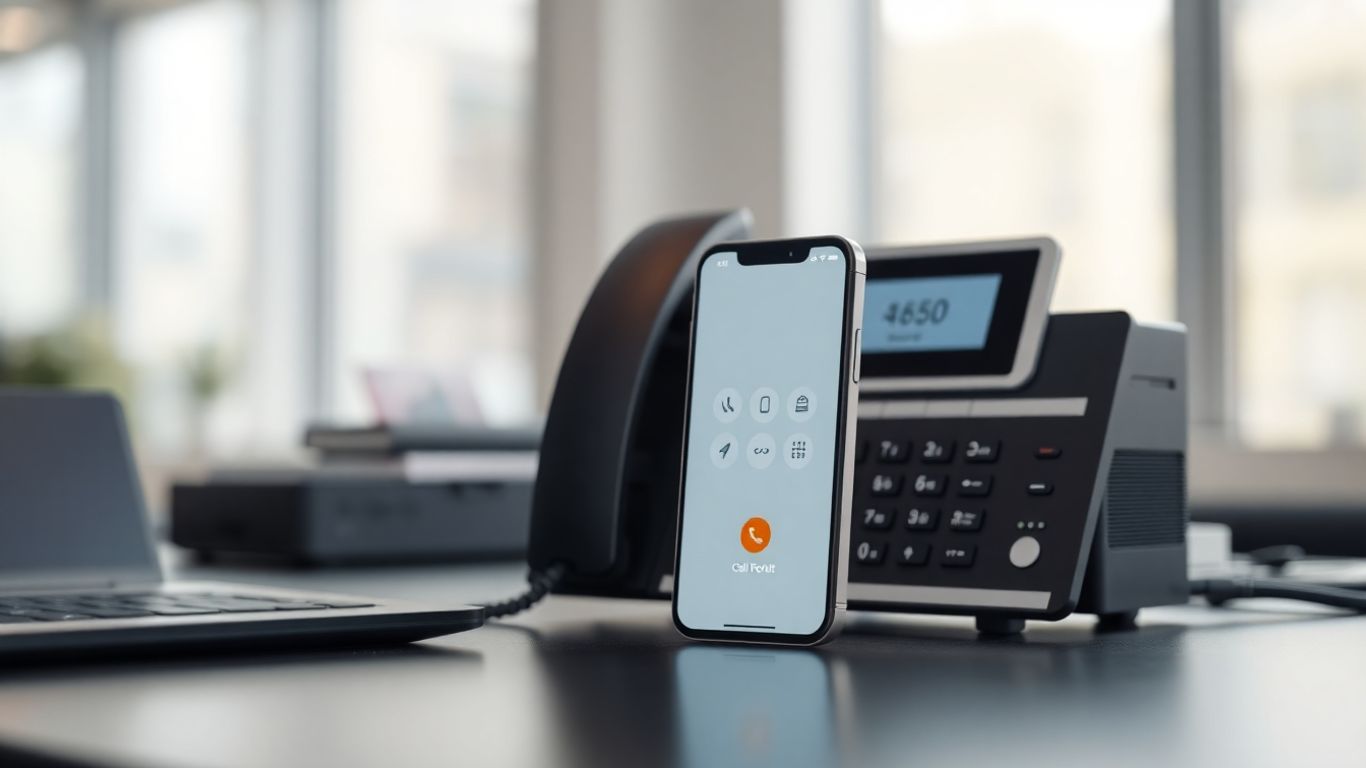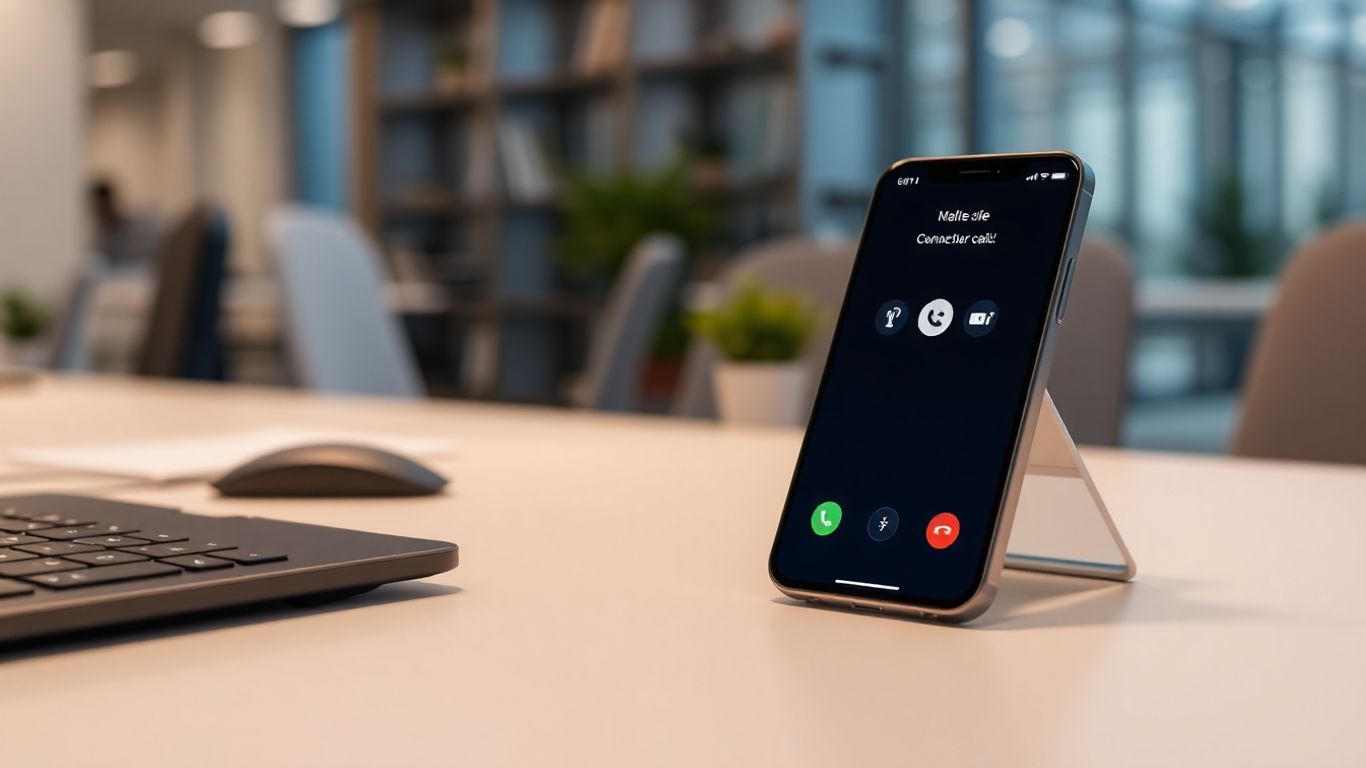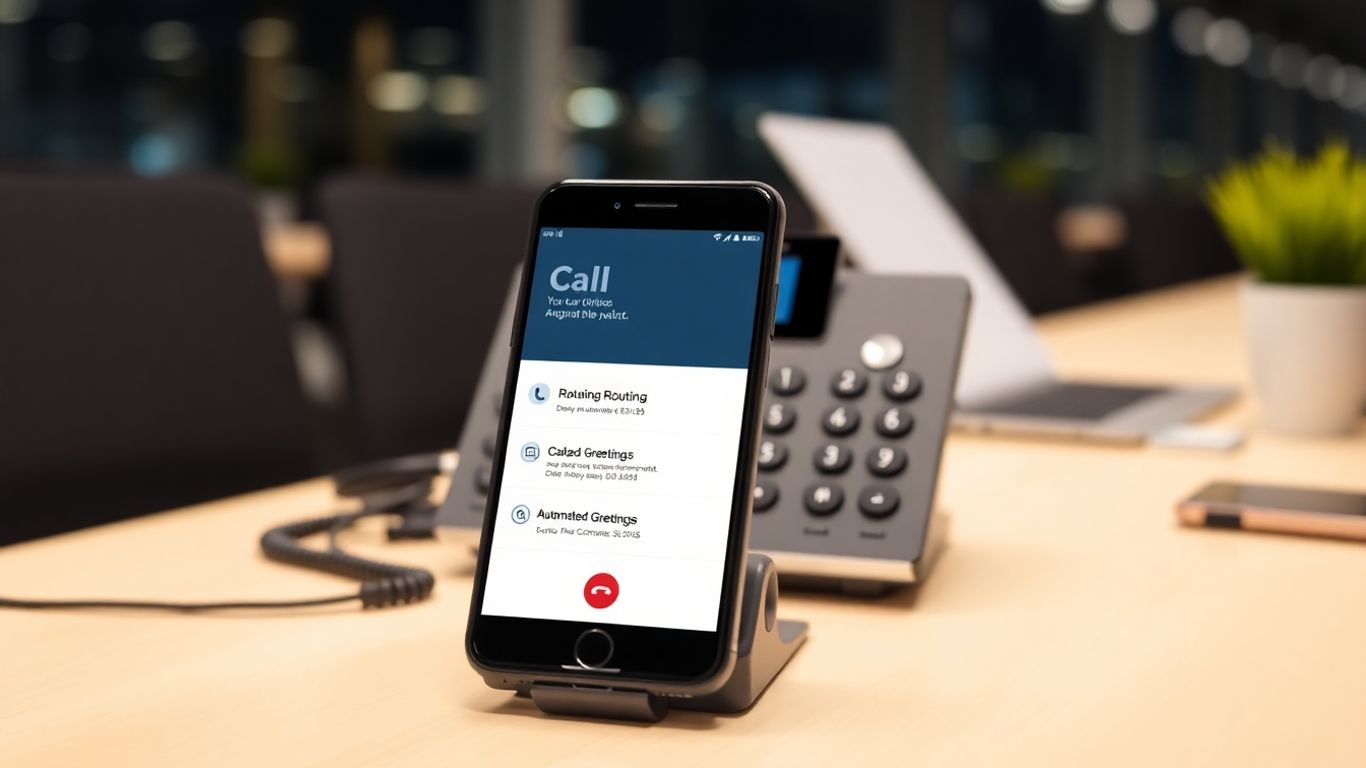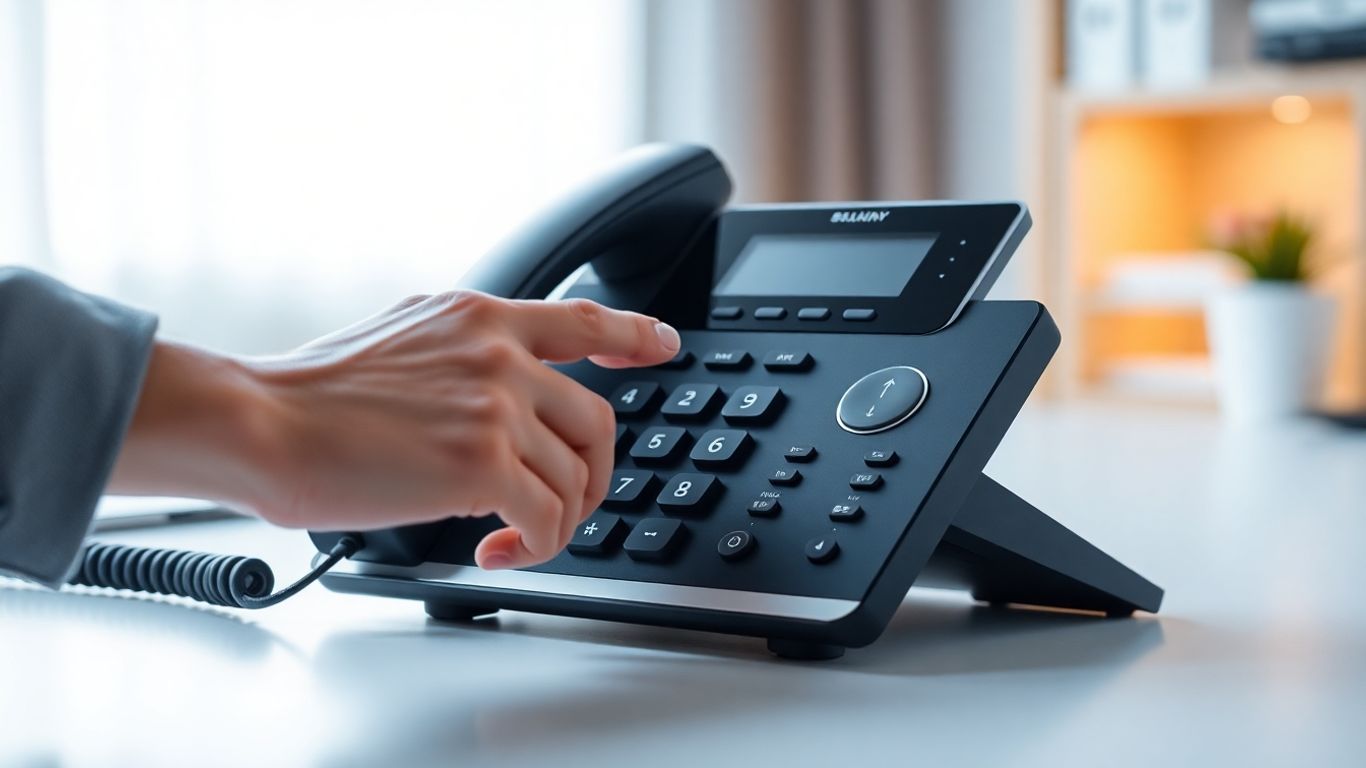Running a small business means juggling a million things, and sometimes, the phone system can feel like just another chore. But what if it could actually make your life easier? That's where a small business phone with auto attendant comes in. Think of it as your always-on, super-organized virtual receptionist. It handles the basics so you and your team can focus on what really matters. We're going to look at how these systems work and why they might be just what your business needs to run a little smoother.

Think of an auto attendant as your business's digital doorman. It's the first point of contact for anyone calling in, and it can make a big difference in how people perceive your company. Gone are the days of just a generic "please hold." Modern auto attendants are smart, flexible, and can really help streamline how calls come into your business.
At its core, an auto attendant is a system that answers incoming calls and then guides the caller to the right place. It uses pre-recorded messages and prompts, usually asking callers to press a number or say a word to get to where they need to go. For example, "Press 1 for Sales, Press 2 for Support." This is way better than just letting calls ring endlessly or having one person try to juggle every single incoming line. It's a way to automate that initial call sorting process, making sure callers get to the right department or person without much fuss.
Auto attendants are more than just fancy phone menus; they're a foundational piece of modern business communication, helping to manage caller expectations and direct them efficiently.
Today's auto attendants are packed with features that go way beyond basic call routing. You can set up greetings that sound really professional, and even have different greetings for different times of the day or for holidays. Some systems can even transcribe voicemails into text, so you can read messages instead of listening to them. Plus, many can connect with your other business tools, like your CRM, which means when a call comes in, the system can potentially pull up customer information. It’s about making the whole call experience smoother for everyone involved.
Here are some of the standout features you'll find:
For small businesses, an auto attendant can be a real game-changer. It makes your company sound bigger and more organized than it might be. It also frees up your staff. Instead of someone spending their day answering basic questions or directing calls, they can focus on more important tasks that actually move the business forward. This means better productivity and happier employees. Plus, it can cut down on costs associated with needing a dedicated receptionist, especially if you're a smaller team. It's a smart way to manage your communications without breaking the bank. You can even explore AI-powered outbound phone agents to further automate communication tasks.
Here’s a quick look at the advantages:
Getting calls to the right person quickly is a big deal for any business, especially a small one. You don't want customers getting frustrated or hanging up because they can't find who they need. That's where smart routing comes in. It's like having a super-efficient receptionist who knows everyone's job and where they sit, even if your office is spread out or everyone's working from home.
First impressions matter, right? Your auto attendant's greeting is the first thing a caller hears. Instead of a generic "Please hold," you can create a warm, professional welcome that reflects your brand. You can even change these greetings based on the time of day or special events. Think about a holiday greeting in December or a special offer announcement during a sale. This personal touch makes a big difference. You can also set up prompts that guide callers clearly. For example, "Press 1 for Sales, Press 2 for Support." It’s about making it super easy for people to get where they need to go without any confusion.
This is a lifesaver. Your business probably isn't open 24/7, and that's okay. Time-based routing means your phone system automatically knows when to direct calls differently. During business hours, calls go to your team. After hours, they can go to voicemail, a different department, or even a support line. The same goes for holidays. You can set specific schedules so your system doesn't give out the wrong information or send calls to an empty office on Christmas Day. It’s about being smart with your availability and making sure callers get the right message at the right time, every time. This helps manage expectations and avoids missed opportunities.
Some businesses have a lot of departments or specialized services. Trying to fit all that into a single menu can get messy fast. Multi-level menus let you create a more detailed call flow. So, after pressing "1 for Sales," a caller might then hear, "Press 1 for New Accounts, Press 2 for Existing Accounts." This keeps your main menu clean and allows callers to drill down to exactly what they need. It’s like a well-organized filing cabinet for your calls, making sure no one gets lost in the shuffle. This kind of detailed routing is key for businesses that have a lot of different functions and need to direct callers with precision. It’s a way to handle complexity without overwhelming the caller. For example, a real estate agency might use this to direct inquiries about specific properties or services, ensuring the right agent gets the lead. real estate industry
Intelligent routing isn't just about directing calls; it's about creating a smooth, efficient, and positive experience for every person who contacts your business. It shows you value their time and have a system in place to serve them well.
Artificial intelligence is really changing how phone systems work, making them smarter and more helpful. It's not just about answering calls anymore; it's about making those interactions more productive and less of a hassle for everyone involved.
Remember digging through voicemails, trying to catch every word? AI changes that. Now, your voicemails can be automatically turned into text. This means you can quickly read messages instead of listening to them, saving a ton of time. It's super handy for getting the gist of a message fast or for searching through old messages later. Plus, you can get these transcriptions sent right to your email, so you don't even have to log into your phone system to see what's up.
This is pretty neat. Imagine your AI system can actually send text messages during a live phone call, based on what's being discussed. You can set up simple rules, like "If the caller asks for pricing, send them our rate sheet." The AI listens to the conversation, figures out what the caller needs, and sends the right text message automatically. This is great for things like sending calendar links for appointments, sharing PDF documents, or even sending out special discount codes when someone's talking about a premium service. It makes sure customers get the info they need right away, without the person on the phone having to stop and find it.
Think of having a receptionist who never sleeps, never takes a break, and knows all the answers. That's what an AI receptionist can do. It can handle company-specific questions, schedule appointments, and respond to callers just like a human would, but all day and all night. This means your business is always available to new leads or existing customers, even outside of normal business hours. It's a big step up from just having a basic voicemail, offering a more interactive and helpful experience for anyone trying to reach you.
Here's a quick look at what AI can do:
AI is making phone systems less about just making calls and more about smart communication. It helps automate tasks that used to take up a lot of time, making your business run smoother and keeping customers happier.

Think of Zapier as the ultimate connector for your business tools. It lets different apps talk to each other automatically, so you don't have to manually move information around. This means your phone system can work hand-in-hand with your customer relationship management (CRM) software, your project management tools, or even your email marketing platform. When a call comes in, Zapier can automatically pull up the customer's record in your CRM. Or, if a customer leaves a voicemail, Zapier can create a task for your sales team. It's about making everything flow smoothly.
Your phone system shouldn't be a standalone island. Modern auto attendants are built to play nice with the software you already use. Imagine this: a customer calls, and before you even pick up, your screen shows their name, past interactions, and any open support tickets, all pulled from your CRM like Salesforce, HubSpot, or Zoho. This isn't just convenient; it helps you provide more personalized and efficient service because you have the context you need right away. It also means less time spent searching for information and more time actually talking to your customers.
Keeping information up-to-date everywhere can be a headache. With good integration, your phone system and other business applications can sync data automatically. This means if a new contact is added to your CRM, it can be available in your phone system's directory. Or, if call logs are recorded, they can be automatically added to customer profiles. This constant sync stops data from getting stale and ensures everyone in your team is working with the most current information. It's like having a central brain for your business communications and customer data.
Managing your phone system's expenses and how it's used is pretty important, especially for a small business where every dollar counts. You don't want surprise charges popping up, right? That's where smart features come in handy. They give you a much clearer picture of what you're spending and help you keep things in check.
This is a big one for controlling costs. Think of it like setting a budget for your AI receptionist. You can decide exactly how many minutes you want it to be active each day, week, or month. It's not just about saving money, though. It also helps you make sure the AI is available when you need it most, like during your busiest business hours. If you're just starting out, you could even use this feature to test the waters with a limited number of minutes before committing to more. It’s a flexible way to manage expenses and make sure your AI receptionist usage aligns with your business needs.
Beyond just setting minute limits, there are other ways to keep your AI usage in line with your budget. Some systems offer real-time tracking, so you can see exactly how much you're using as it happens. This lets you adjust things on the fly if needed. You can also set up alerts that let you know when you're getting close to your limit. This proactive approach helps avoid those unexpected overage charges that can really throw a wrench in your financial planning. It’s all about having visibility and control.
Nobody likes bill shock. With features designed for predictable billing, you get a clearer idea of what your phone system will cost each month. Many providers offer tiered plans based on features and usage, making it easier to pick one that fits your budget. Some even have options for unlimited calling within certain regions, which can be a huge cost saver. Understanding the pricing structure upfront, like knowing if text messages are included or cost extra, is key to managing your expenses effectively. This way, you can focus on running your business, not worrying about unexpected phone bills. It's about making your phone system a predictable part of your operational costs, not a variable expense that keeps you guessing. For example, you can check out different plans to see what fits your budget, like the Ooma Office Pro Plus plan which includes CRM integration and more text messages per month.

As your small business grows, your phone system needs to keep up. You don't want to hit a wall where you're missing calls or struggling to manage increased volume. That's where scalability and flexibility come in. Think of it like this: you wouldn't buy a tiny car if you knew you'd soon need to haul a family of five and a dog. Your phone system should be the same – ready for whatever comes next.
Today, many businesses operate with people working from different locations, sometimes even different countries. Cloud-based phone systems are perfect for this. They aren't tied to a physical office location. This means your team can use their business line from anywhere with an internet connection, whether they're at home, traveling, or working from a coffee shop. It makes managing a distributed team much simpler and keeps everyone connected.
What happens when your business doubles in size? Or triples? A good phone system should be able to handle that expansion without a hitch. Cloud systems are built for this. You can usually add new users, features, or lines with just a few clicks. It's not like you have to buy a whole new, expensive setup. You just adjust your plan as needed. This flexibility means you're not overpaying for capacity you don't use, but you're also not caught short when things get busy.
The ability to easily scale up or down is a huge advantage. It means your technology investment directly supports your business strategy, rather than hindering it.
Remember the days when businesses worried about having too many people on the phone at once, leading to busy signals? That's largely a thing of the past with modern systems. Many auto attendant solutions can handle an unlimited number of calls happening at the same time. This is a game-changer. It means no matter how many customers call, your system can manage them all. Your AI receptionist can field inquiries, route calls, and take messages without ever getting overwhelmed. It’s like having a super-powered receptionist who never sleeps and can talk to everyone at once.
Let's face it, nobody likes being put on hold. When a customer calls your business, they want answers, and they want them fast. An auto attendant system can really change that whole experience for the better. It's not just about making your business sound more professional, though that's a nice bonus. It's about making sure your customers get to the right person or department without a lot of fuss.
One of the biggest wins with an auto attendant is cutting down on how long people have to wait. Instead of a busy signal or a long hold, callers are greeted immediately and can be directed to where they need to go. Think about it: if someone calls sales, they get sent straight to sales. If they need support, they go to support. This means fewer frustrated customers hanging up and more people getting their issues sorted out quickly.
The goal here is simple: make it as easy as possible for someone to get the help or information they need. When you do that, they feel valued, and that's good for business.
Human receptionists are great, but let's be real, they can have off days, get sick, or just be busy with other tasks. An auto attendant, on the other hand, is always on and always follows the script you set. This means every caller gets the same professional greeting and the same routing process, no matter when they call or who's technically

So, you've decided an auto attendant is the way to go for your small business. That's a smart move. But with so many options out there, how do you pick the one that actually fits your needs without becoming a headache? It’s not just about picking the cheapest one, or the one with the most flashy features you'll never use. You want something that works for you, not against you.
Let's be real, nobody wants to spend days figuring out a new phone system. When you're looking at auto attendants, pay close attention to how easy it is to get things up and running. Can you set it up yourself without needing a degree in computer science? Most good systems will let you create custom greetings and set up your call menus pretty straightforwardly. Think about it: you want to be able to change a greeting or add a new extension without calling tech support every single time. A system that's intuitive means you and your team can actually use it effectively from day one.
Here’s a quick checklist for setup ease:
Your phone system doesn't live in a vacuum. It needs to play nice with the other tools you use every day. Think about your CRM, your email, your calendar, maybe even your project management software. A system that can connect with these can save you a ton of time and prevent information from getting lost. For example, imagine if a call automatically updated a customer's record in your CRM. That’s the kind of efficiency boost you should be looking for. Don't just ask if it integrates, ask how well it integrates and what specific tools it works with. Zapier integration is a big one here, opening the door to thousands of other applications.
Even the simplest systems can hit a snag now and then. When that happens, you need to know you can get help, and fast. What kind of support does the provider offer? Is it just email, or do they have phone support? What are their hours? For a small business, being able to get a quick answer when something goes wrong can be the difference between a minor inconvenience and a major disruption. Look for providers that offer responsive customer support, ideally with multiple ways to reach them. A system that's easy to use is great, but knowing there's a reliable backup if you need it is just as important.
Choosing the right auto attendant is about finding a partner for your communication, not just a piece of software. It should simplify your work, not add to it. Consider ease of use, how it connects with your existing tools, and the support you'll get when things don't go perfectly.
Picking the right phone system with an auto attendant can seem tricky for small businesses. You want something that sounds professional and helps manage calls without you being there all the time. Think about how a system can greet callers, send them to the right person, or take messages. This can make a big difference in how customers see your business. Ready to see how an AI receptionist can help? Visit our website to learn more and get started!
So, there you have it. Auto attendant features aren't just some fancy tech for big corporations anymore. They're totally doable for small businesses, and honestly, they can make a huge difference. Think about it – fewer missed calls, happier customers getting to the right place faster, and your team not getting bogged down with basic phone stuff. It’s about making your business run smoother, saving time, and maybe even saving a bit of money. If you're looking to level up how your business handles calls, checking out these auto attendant options is definitely worth your time. It’s a smart move for any small business wanting to sound professional and operate more efficiently.
Think of an auto attendant as your business's automated receptionist. When someone calls, instead of a person answering, a friendly recorded voice picks up. It then gives callers options, like 'Press 1 for sales' or 'Press 2 for support,' making sure they get to the right place without anyone having to manually transfer calls.
It saves money by handling many tasks a human receptionist would do, like greeting callers and directing them. This means you might not need as many staff members focused just on answering phones, freeing up your team to do other important work. Plus, it can help reduce missed calls, which can mean lost business.
Absolutely! You can record your own greetings and prompts to sound exactly how you want. This helps create a professional and consistent image for your business every time someone calls.
Auto attendants are smart about time! You can set them up to give different messages or options based on the day of the week or even holidays. So, instead of just a generic 'we're closed,' it can say something like, 'We're closed now, but you can leave a message, and we'll call you back first thing tomorrow.'
Most modern auto attendant systems are designed to be pretty easy to use. You can usually set them up through a simple online portal without needing to be a tech expert. Many also let you change greetings or options easily if your business needs change.
Yes! By making sure calls go to the right person or department right away, it cuts down on confusion and saves everyone time. Some advanced systems can even connect with other tools your team uses, like your customer list, to make things even smoother.
An auto attendant is like the basic version – it uses simple button presses ('Press 1, Press 2') to route calls. An IVR (Interactive Voice Response) system is more advanced. It can understand spoken words, ask more detailed questions, and even do things like check your account balance or look up order status automatically.
Definitely. Unlike a human receptionist who can only handle one call at a time, an auto attendant can manage many calls simultaneously. This is super helpful if your business gets busy, ensuring no one gets a busy signal when they try to reach you.
Start your free trial for My AI Front Desk today, it takes minutes to setup!








